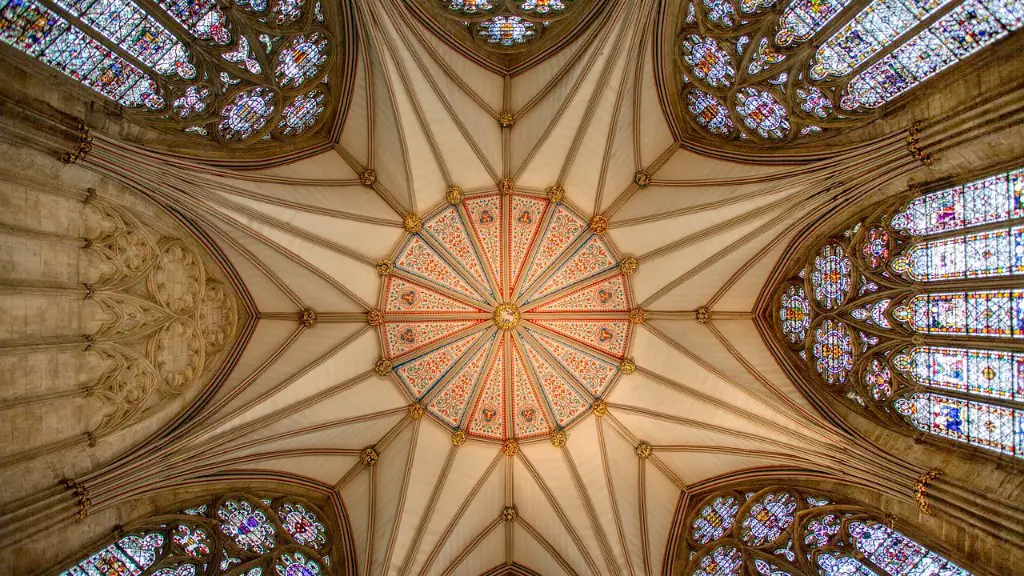For many, architecture can seem like an intimidating and unforgiving field, but why is it so hard? The questions of why architecture is so difficult require thoughtful and insightful analysis. Architects must continually challenge themselves and strive to create innovative and inspiring designs that can stand the test of time. To gain a better understanding of why architecture is hard, it’s important to explore the complexity of architecture, its long history, and its potential risks.
The Complexity of Architecture
Architecture is complex due to the range of skills and knowledge necessary to be successful. Designing a building involves understanding how the natural elements, like wind and sun, interact with the building, as well as its evolving structure and environment. Architects must also be well versed in problem solving, creative thinking, and have a deep understanding of several disciplines such as engineering, art, and mathematics.
In addition, architects face unique challenges in every project, given that every building is like a unique puzzle that must be solved. This complexity is further enhanced when navigating the restrictions of land use and local zoning laws. Architects must take these restrictions into account in order to create the perfect design that meets their clients’ needs.
A History of Development
Architecture has come a long way since its advent centuries ago, with each new architectural style contributing to what we know today. During the 19th and 20th centuries, design blossomed in different countries giving us new ways to approach our built environment. Today, architects continue to learn and draw influence from history to produce innovative solutions.
The history of architecture is vast and complex, and staying abreast of the current trends and historical developments can be quite difficult. Architects must be familiar with the building regulations and codes, both past and present, to ensure they are adhering to the standards established within their communities.
Potential Risks
Architecture can be a hazardous field due to the numerous potential risks associated with the process of designing and constructing a building. From risks of accidents on the building site to potential litigation over design errors, architects must be aware of the liabilities that come with the job. As a result, the architectural professionals must continually stay informed on safety regulations and building codes to help minimize their risk of liability.
In addition, architects must often take on their own financial risk. Depending on their contracts, architects may have to pay any unpaid balances, often without having any recourse against the client. This can be a difficult experience for any architect, as they take on all of the risks associated with the project without any of the potential rewards.
The Technology Revolution
In recent years, new technologies have been revolutionising the architecture industry, enabling architects to create designs that are faster, more efficient, and with greater detail. With the help of virtual reality (VR) and computer-aided design (CAD) software, architects can create stunning 3D models of their designs and instantly check for errors. Building Information Modeling (BIM) software has allowed for complex designs to be produced in a fraction of the time.
As technology advances further, it is becoming increasingly difficult for architects to stay ahead of the curve. Architects must stay up to date with the newest software and techniques to ensure they remain competitive in the industry. While this can be challenging, it is also extremely rewarding as architects are able to design groundbreaking projects.
The Impact of Social Media
Social media has played a major role in how architecture is perceived and valued. With the proliferation of Instagram and other platforms, architects have more opportunities than ever to showcase their projects and reach a wide audience. Architects are more frequently engaging with their followers, gaining feedback and creating conversations about current projects. As a result, the architecture industry is becoming more accessible to the public and gaining more recognition than ever before.
However, this shift has also increased the pressure on architects to create more visually stimulating designs. Architects must now balance the heightened aesthetic demands with the technical and financial constraints of their projects. This can be a challenge for architects who must continuously think of innovative solutions that meet both the technical and the visual standards.
The Constant Demand for Innovation
Architecture is often described as an ever-evolving art and science, and it is this quality that makes it such an exciting and challenging profession. Architects must always strive to innovate, without sacrificing quality or functionality. They must be able to create seamless designs that are constantly pushing the boundaries of what is possible. It is this constant demand for innovation that makes architecture so challenging and rewarding.
Architects are also tasked with anticipating future changes and considering how their designs will need to evolve over time. They must think of ways to make their designs energy efficient, eco-friendly, and sustainable, while also keeping up with latest trends and technologies. It is only through a deep understanding of the science, art, and history of architecture that the boundaries of innovation can be tested and pushed.
Design for the Long-Term
Architecture is more than just creating aesthetically pleasing structures; it is about designing for the future. Architects must have an exact understanding of how their designs will age over time and how the materials and designs will endure the elements. This means architects must consider the lifespan of the building materials they are using and ensure they are using the best and most appropriate materials.
Successful architectural designs are built to last, and this is why the profession is so difficult. Architects must think of the future and ensure their projects are designed with longevity in mind. Therefore, architects must strive to come up with new techniques and materials that can help ensure their designs stand the test of time.
Frequent Changes in Style
Architecture styles are constantly evolving and shifting with the times, and it can be difficult for architects to stay on the cutting edge of design. Architects must think of ways to innovate and stay ahead of the curve, creating designs that blend the old with the new. This can be a difficult task as there is no one-size-fits-all approach to architectural design, and architects must be able to adapt their designs to the changing styles and trends.
Architects must also be aware that not all designs are accepted by the public, and as such, it can be a struggle for them to create structures that not only adhere to the standards of the profession but also please the general public. Architects must be able to create designs that are technically sound but also evoke an emotional response in the viewer.
Maintaining Quality
Lastly, it can be difficult for architects to ensure the quality of their designs. Every project is unique and its success relies heavily on the architect’s ability to control the quality of the construction process. Architects must stay involved throughout the construction process, ensuring that any changes are incorporated into the design while still adhering to the original plans. This can be a difficult task as architects must remain involved and committed to the success of their project from start to finish.
The architecture field is constantly evolving, and to stay at the top of their game, architects must continually challenge themselves and strive to create innovative and inspiring designs. The complexity of architecture, its long history, and its potential risks make this a difficult, yet rewarding field. It is this dedication to innovation and challenging the norms that make architects successful and create structures that can stand the test of time.




